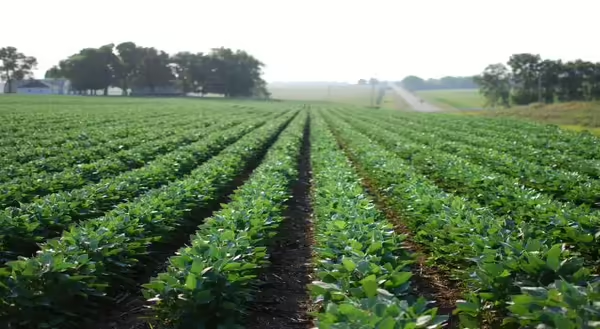
There is a lot of discussion surrounding the Agricultural Economy right now and its potential impact on both farmers and rural communities. In late summer 2019, the American Bankers Association and Farmer Mac collaborated on a survey. Over 450 bank managers, executives and Ag Lenders participated from across the nation. Bank size ranged from under $50 Million in assets to over $5 Billion. You can find the full report here: https://www.farmermac.com/wp-content/uploads/2019-AG-Lending-Survey-Report-FINAL.pdf
The report reemphasizes the negative impact on the Ag Economy from retaliatory tariffs, lower grain prices and weather. Following are some highlights from the report, as well as, some additional observations on interest rate volatility and farm retirements.
- 82.5% of lenders that responded agreed that farm income and liquidity, cash available to pay expenses, loan payments and interest were down. This was for all reporting regions, but the Cornbelt and Plains states were the hardest hit.
- According to the survey, overall the total value of farm real estate has increased in most of the U.S., but lenders are predicting that this is due to a current lack of supply. However, in the Cornbelt and Plains respondents have been reporting declines in farmland values since 2014. Many lenders believe there is some above-market valued land on farmer’s balance sheets.
- Respondents also believe that they expect continued downward pressure on cash rents.
- Lenders’ greatest concern behind credit quality and Ag loan deterioration was competition from other lenders, most specifically Farm Credit.
- To offset credit risk, lenders are increasing the use of government loan guarantees from the USDA (FSA and Rural Development)
- Lenders included interest rate volatility among their top three concerns; however, they are not expecting much volatility in either long-term or short-term rates over the next 12 months.
Having been an Agricultural lender during the 1980s farm crisis, I understand the apprehension associated with rate volatility. Several authors have made comparisons between the 1980s farm crisis and financial stress being felt by farmers in the U.S. today. What I have not read much about is the difference between current rates on farm debt and those experienced during the 1980s.
The Prime rate is what banks charge to their best (prime) borrowers. In 1980 the Prime rate averaged 15.26%; in 1985 it averaged 9.93%; and today it is 5.50%. A typical farm borrower might pay 1-2% over prime for their short-term loans. In the 1980s, many long-term loans as well as short-term had variable rates. Rates on short-term loans could change as often as daily and rates on long-term loans could change as often as every 1 to 5 years.
I mention this because it might well be the only silver lining in the Ag economy today. Imagine a farmer that has a $100,000 operating line due after 12 months. Using the prime rates listed above plus 1.5%, the interest expense for one year on that debt would have been $16,760 in 1980, $11,430 in 1985 and $7000 in 2019. My goal here is not to undermine the current crisis facing farmers from retaliatory tariffs, lower profitability and weather-related disasters. I’m just saying that interest rates were another debilitating factor in the 1980s Farm Crisis that I don’t see many economists or the media discussing today.
Another concern that the respondents to the survey reported was the retirement of farms. There has been an increase in farm retirements according to the survey. “As a result of the continued stress on profitability agricultural lenders observed rising trends in farm exits and financial strain.” Some farmers are leaving because they can no longer find funding options to support their farm operations. However, it also makes since that with the increasing average age of farmers, many might see this as a good time to get out of farming all together. According to https://modernfarmer.com the average age of a U.S. farmer is 58. Nearly two-thirds (63.3%) of the respondents expect farm retirements to increase over the next 12 months. The caution here is that the more farm land being sold in the market could place downward pressure on land prices much as it did during the 1980s.
Pam Schallhorn is an Illinois Extension Specialist in Community and Economic Development for most of central and western Illinois. Pam is also part of a team, led by Michigan State University, that recently trained over 500 Farm Service Agency employees on Farm Stress. During the 1980 Farm Crisis she was an Ag lender in Whiteside County, Illinois. She can be reached at pscha2@illinois.edu